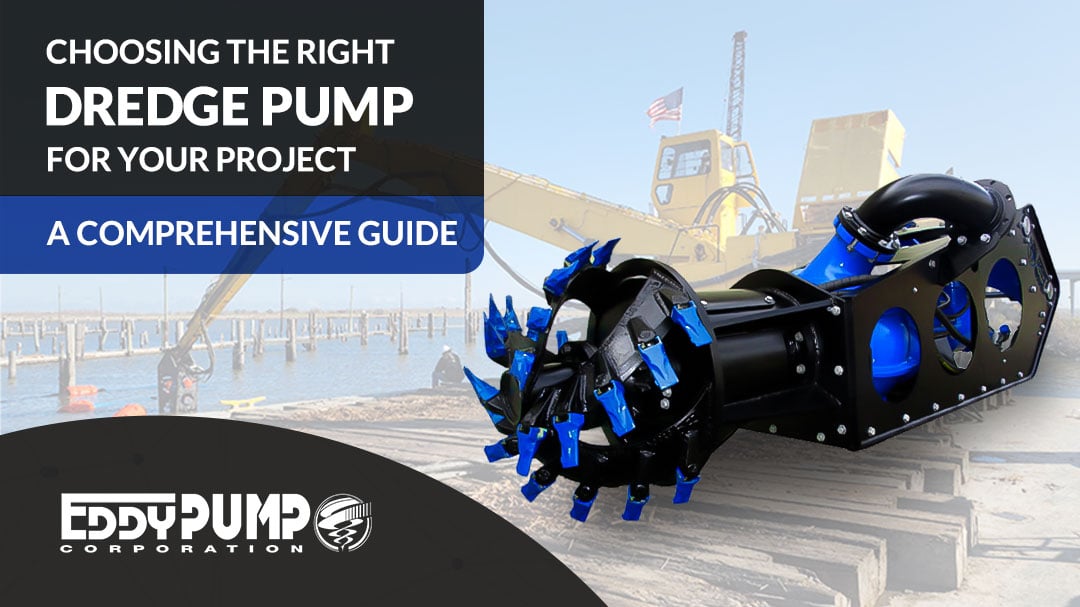
Selecting the appropriate dredge pump is crucial for the success of any dredging project. Whether you’re tackling sediment removal, managing flood risks, or addressing environmental contamination, the efficiency and performance of your dredge pump can significantly impact project outcomes. In this comprehensive guide, we’ll explore the key factors to consider when choosing a dredge pump tailored to your specific project requirements.
Understanding Dredge Pumps:
Dredge pumps are specialized hydraulic devices designed to move sediment, slurry, and debris from water bodies during dredging operations. These pumps are central in various applications, including environmental remediation, navigation channel maintenance, and marine construction. Dredge pumps come in different types and configurations, each offering unique advantages and capabilities depending on the project’s scope and conditions.
Key Considerations:
- Project Requirements: Start by assessing your dredging project’s specific requirements, including the type of material to be dredged, the volume of sediment to be removed, and the desired pumping distance. Understanding these parameters will help determine the appropriate pump size, capacity, and power requirements.
- Material Composition: Consider the composition and consistency of the sediment or slurry to be dredged. Some pumps are better suited for handling coarse materials such as sand and gravel, while others excel at transporting fine sediments or viscous sludges. Matching the pump’s design to the material characteristics is essential for optimal performance and efficiency.
- Pumping Efficiency: Efficiency is a critical factor in dredging operations, as it directly impacts productivity, fuel consumption, and operational costs. Look for pumps with high hydraulic efficiency and optimized flow characteristics to minimize energy losses and maximize material transport capacity.
- Pump Configuration: Dredge pumps are available in various configurations, including centrifugal, submersible, and piston pumps, each with distinct operating principles and performance characteristics. Centrifugal pumps are commonly used for their versatility, high flow rates, and ease of maintenance, while submersible pumps offer advantages in handling abrasive and corrosive materials in submerged conditions.
- Suction Depth and Head: Consider the pump’s required suction depth and discharge head relative to the dredging site’s water depth and topography. Choosing a pump with sufficient suction capabilities and head pressure ensures effective material extraction and transportation over long distances, even in challenging operating conditions.
- Durability and Reliability: Dredging projects often entail harsh operating environments, including abrasive sediments, corrosive chemicals, and fluctuating water levels. Select pumps constructed from durable materials such as hardened steel, abrasion-resistant alloys, or polymer composites to withstand wear and corrosion over prolonged use. Additionally, prioritize pumps with robust sealing systems and reliable components to minimize downtime and maintenance requirements.
- Environmental Considerations: Environmental factors such as noise emissions, vibration levels, and fuel consumption should also be considered when choosing a dredge pump. Opt for pumps with low environmental impact and compliance with regulatory standards to minimize disturbances to aquatic ecosystems and neighboring communities.
Types of Dredge Pumps and Their Applications:
Centrifugal Pumps:
- Application: Centrifugal pumps are versatile and widely used in dredging projects due to their high flow rates, efficiency, and ease of maintenance.
- Advantages: They are suitable for handling various materials, including sand, silt, and gravel, making them ideal for general-purpose dredging applications.
- Considerations: Centrifugal pumps are adequate for pumping large volumes of material over relatively short distances but may require booster pumps for longer discharge distances.
Submersible Pumps:
- Application: Submersible pumps are designed to operate underwater, making them suitable for dredging in confined spaces or deep water environments.
- Advantages: They offer enhanced mobility and flexibility, allowing direct placement at the dredging site without needing external support structures.
- Considerations: Submersible pumps are adequate for handling abrasive and corrosive materials but may have limitations regarding discharge head and flow rate compared to surface pumps.
Piston Pumps:
- Application: Piston pumps are primarily used in high-pressure dredging applications requiring precise control and high suction capabilities.
- Advantages: They offer exceptional suction power and pressure control, making them suitable for precision dredging tasks such as underwater excavation or mining operations.
- Considerations: Piston pumps are typically more complex and require specialized maintenance than centrifugal or submersible pumps, making them better suited for specialized applications.
Piston Pumps:
- Application: Jet pumps utilize high-velocity water or air jets to entrain and transport sediment, making them suitable for dredging in shallow water or areas with limited access.
- Advantages: They offer simplicity, compactness, and versatility, allowing for efficient dredging in tight spaces or environmentally sensitive areas.
- Considerations: Jet pumps may have limitations in pumping capacity and efficiency compared to other dredge pumps, particularly for large-scale dredging projects.
Conclusion:
Choosing the right dredge pump is a critical decision that can significantly influence the success and efficiency of your dredging project. By considering project requirements, material composition, pumping efficiency, pump configuration, suction depth, durability, and environmental considerations, you can select a pump tailored to your specific needs and achieve optimal performance in sediment removal, flood control, or environmental remediation endeavors.
